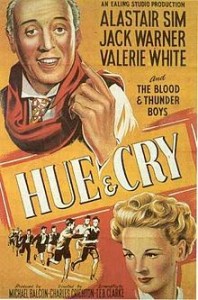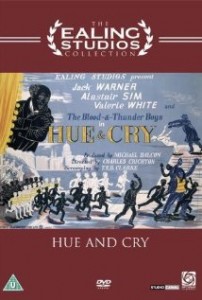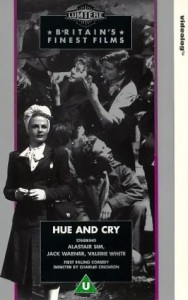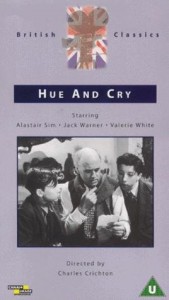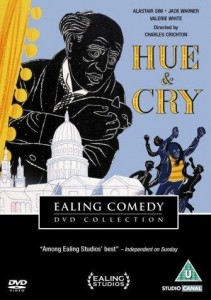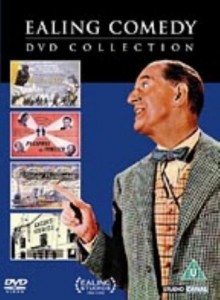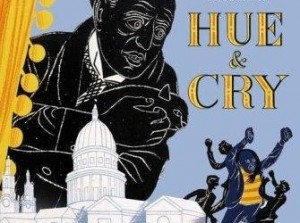Hue and Cry ***** (1947, Alastair Sim, Jack Warner, Harry Fowler) – Classic Movie Review 1653
Director Charles Crichton’s 1947 Hue and Cry is notable and historically important as the first of the Ealing comedies, leading the way for Britain’s Ealing Studios classics of the late Forties and Fifties. But Crichton’s splendid comedy adventure thriller is a also pioneering classic in its own right, full of vitality, and now a vintage snapshot of life in war-damaged London just after World War Two.
In its original screen story, Harry Fowler’s gang of Cockney street kids called The Blood and Thunder Boys chases after a master crook they suspect of sending coded messages for robberies by cunningly altering their favourite comic strip’s wording each week, unknown to the writer (Alastair Sim) and the printer.
The acting’s superlative all round, but Sim is particularly outstanding as the unworldly comic strip writer Felix H Wilkinson. Ealing regular Jack Warner also stars as Nightingale, Fowler plays Joe Kirby, Frederick Piper and Vida Hope play his parents Mr and Mrs Kirby, and Heather Delaine is his sister Dorrie.
Otherwise, apart from the three main stars, it’s not a particularly starry cast, just one filled with the right, good actors: Valerie White, Jack Lambert, Gerald Fox, Grace Arnold, Joan Dowling, Douglas Barr, Stanley Escane, Ian Dawson, Paul Demel and Bruce Belfrage are also among them. Johnny Briggs, Barry Ford and Dandy Nichols have uncredited bit parts.
Screenwriter T E B Clarke must share full credit for the film’s success with Crichton for his superb original screenplay that vividly develops London as a character in a witty gangster crime plot centring on a Dickensian working-class children’s street culture and kids’ secret clubs. You expect to see Fagin and Oliver popping up at any time.
And Douglas Slocombe’s black and white cinematography is magical and now a notable and valuable historic document showing the vanished panorama of the postwar capital. Like the screenplay, the realistic filming almost entirely on location in the war-blitzed scene of a devastated London is both pioneering and poignant.
The Nazi Blitz finally erased Victorian London and its attitudes and Hue and Cry captures the moment the old city was on the brink of its rebirth. And it marks the moment British cinema moved on to this brave new world.
Crichton is the director of The Lavender Hill Mob, The Titfield Thunderbolt, The Battle of the Sexes and A Fish Called Wanda.
© Derek Winnert 2014 Classic Movie Review 1653
Check out more reviews on http://derekwinnert.com/

